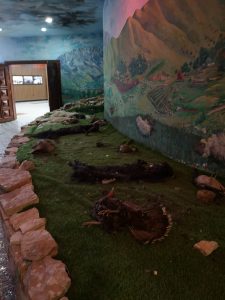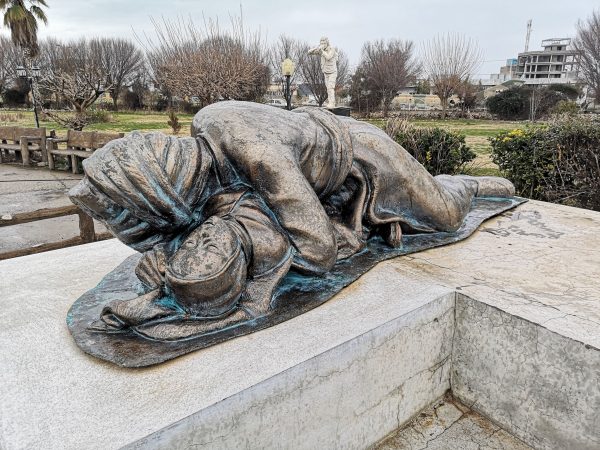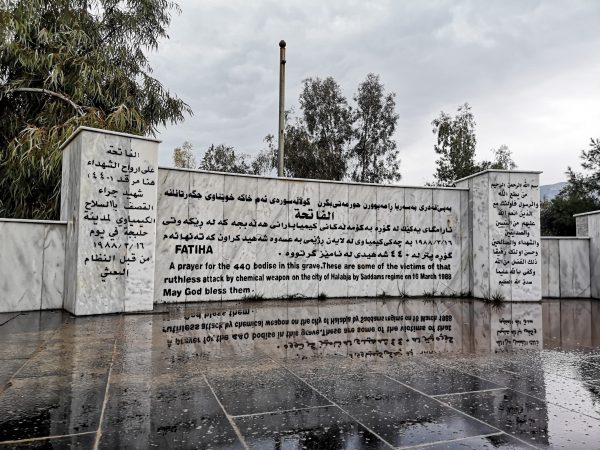The Kurdish people have been going through a saddening series of strife and atrocious struggles for decades now. During the rule of Saddam Hussein up until recently and on the forefront of the war against IS, the Kurds have suffered many casualties. One of such events, amongst the most infamous, is probably the chemical attacks on the city of Halabja also known as Halabja Massacre.
Where is Halabja
Halabja is now its own governorate located in the north of Iraq, or Iraqi Kurdistan. It is composed of towns and villages surrounding the main city of Halabja. The city itself is located one hour drive south east of Sulaymaniyah and only a few kilometres away from the Iranian border.
The history behind the Halabja Massacre
It is this proximity to Iran that explains, in part, why it was the target of such a vicious attack. During the Iran-Iraq War, the Iranians started invading Iraq, helped by some of the local Kurdish populace, hostile to Saddam Hussein’s reign and fighting for independence. 48 hours after Iranian troops occupied the city on March 16th 1988, Saddam Hussein’s right hand man, Ali Hassan al-Majid, today notoriously known as Chemical Ali, ordered a chemical strike on the city in order to oust the Peshmergas and Iranian soldiers holding the town.
One of the saddest part of this event is that, thinking the Baath party was bluffing, the Iranians and Peshmergas did not evacuate the civilians. The idea was that Saddam would never dare strike against that many innocents and yet, did. Mustard gas was dropped all over the city. The Iranian soldiers and Peshmergas, equipped with gas masks and trained to deal with this sort of situation, did not suffer casualties. The civilians, however, were struck by surprise, ill-prepared and were killed or seriously maimed by the gas. It is said that many civilians actually died because they tried to hide in their basement, not knowing that mustard gas goes down, and that staying on their roof or high-above would have saved them. Somewhere between 3000-5000 men, women and children died from the attack, with another ten thousand severely wounded. Up until today, thousands of residents of the area suffer from various cancers or deformities. It is believe that the chemicals used include Tabun, Sarin and Mustard gas and that their smell was covered with an artificial fragrance of apple, so that people would inhale it more. Once the attack was concluded and the Iranian and Peshmerga troops repelled, scientists of the Iraqi army then came to the city to document the effectiveness of the attack. It is through this documentation, as well as through the reports of the handful of journalists who were there are the time, that we can piece together what happened.
In 2005, Dutch businessman Frans Van Anraat was condemned and sentenced to 15 years of prison for having bought the chemicals he then sold to Saddam’s regime. During this trial, the Dutch court who condemned him was the first to rule what had happened in March 1988 as a genocidal act. It was in 2010 that the Iraqi Court ruled that the attack and the other attacks during the Anfal campaign were acts of genocide against the Kurds. Chemical Ali was sentenced to death by hanging. Saddam Hussein himself, however, was never trialled for the crimes committed against the Kurds, as he was executed prior once found guilty of the crimes he committed against the Shia-minorities in the south of Iraq.
Halabja today
From 2000 to 2003, the region would suffer from other tragic events as the militant Islamist group Ansar Al-Islam, a kind of predecessor to ISIS in their ways, held their base in the surrounding mountains. They were ousted by the Peshmerga at the beginning of the US invasion of Iraq and since then the region was freed.
In 2003, the Monument of Halabja martyrs was built. In 2006, however, it was mostly ruined and destroyed by local rioters who were protesting that the Kurdish elite was capitalising on the events of Halabja by visiting once a year on the anniversary of the attack but would then quickly forget about it and not provide any aid to the city. The archives were partially destroyed and a rioter shot dead by the local police force. After these events, the city received funding and was rebuilt, as well as a new monument, known as the Halabja Monument and Peace Museum.
The monument and museums are frequently visited by outsiders wishing to learn more about the events and provide a formidable if not chilling insight into the events. The monument, built in the shape of hands reaching to the sky, contains a reproduction of various scenes of the attack as well as multiple artefacts left from the attacks. Outside, multiple vehicles involved in the attack as well as a statue of the Iranian journalist who brought the massacre to the eye of the world can be found.
Visitors in Halabja will also want to visit the cemetery which contains the mass graves of thousands of victims of the attack, located nearby.








